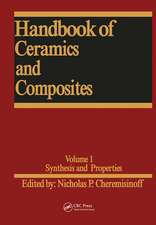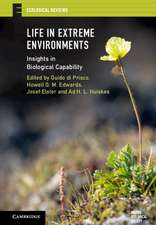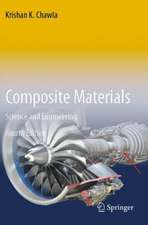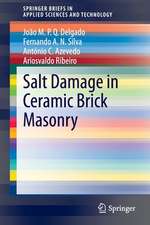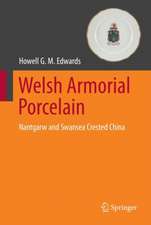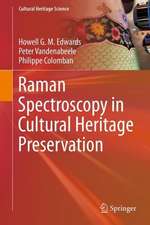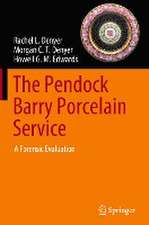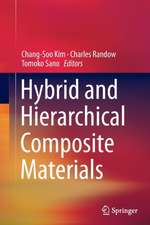The Farnley Hall Service: A Unique Survivor in Nantgarw Porcelain
Autor Howell G. M. Edwardsen Limba Engleză Hardback – 23 feb 2023
| Toate formatele și edițiile | Preț | Express |
|---|---|---|
| Paperback (1) | 728.60 lei 38-44 zile | |
| Springer International Publishing – 24 feb 2024 | 728.60 lei 38-44 zile | |
| Hardback (1) | 950.52 lei 3-5 săpt. | |
| Springer International Publishing – 23 feb 2023 | 950.52 lei 3-5 săpt. |
Preț: 950.52 lei
Preț vechi: 1159.17 lei
-18% Nou
Puncte Express: 1426
Preț estimativ în valută:
181.88€ • 189.90$ • 150.53£
181.88€ • 189.90$ • 150.53£
Carte disponibilă
Livrare economică 15-29 martie
Preluare comenzi: 021 569.72.76
Specificații
ISBN-13: 9783031218156
ISBN-10: 3031218159
Pagini: 223
Ilustrații: XLVII, 223 p. 128 illus., 121 illus. in color.
Dimensiuni: 155 x 235 mm
Greutate: 0.59 kg
Ediția:2023
Editura: Springer International Publishing
Colecția Springer
Locul publicării:Cham, Switzerland
ISBN-10: 3031218159
Pagini: 223
Ilustrații: XLVII, 223 p. 128 illus., 121 illus. in color.
Dimensiuni: 155 x 235 mm
Greutate: 0.59 kg
Ediția:2023
Editura: Springer International Publishing
Colecția Springer
Locul publicării:Cham, Switzerland
Cuprins
1. Introduction: William Billingsley at Derby, Pinxton and Worcester.- 2. The Decoration of Nantgarw Porcelain.- 3. A History of Farnley Hall and the Discovery of the Farnley Hall Nantgarw Service.- 4. The Decorative Enamelling of Nantgarw Brace-Type Porcelain Services.- 5. The Nantgarw Porcelain Embossed and Beribboned Body Moulding.- 6. Analysis of the Composition of the Farnley Hall Service.- 7. Resume of the Importance of the Research Undertaken on the Farnley Hall.
Notă biografică
Howell Edwards, born in Skewen, South Wales, is Professor Emeritus of Molecular Spectroscopy at the University of Bradford. He read Chemistry at Jesus College in the University of Oxford, and after completing his B.A. and B.Sc. degrees, he studied for his doctorate in Raman spectroscopy at Oxford with Dr. Leonard Woodward and then became Research Fellow at Jesus College, University of Cambridge, where he worked with Dr. Jeremy Jones. He joined the University of Bradford as Lecturer in Structural and Inorganic Chemistry, becoming Head of the Department of Chemical and Forensic Sciences, and he was awarded Personal Chair in Molecular Spectroscopy in 1996. He has received several international awards (Sir Harold Thompson Award; Charles Mann Award; Emanuel Boricky Medal; Norman Sheppard Award) in a spectroscopic career which has resulted in the publication of over 1350 research papers in Raman spectroscopy and the characterisation of materials, along with six books on the application ofthis analytical technique to art, archaeology and forensic science. He has had a lifelong interest in the porcelains of William Billingsley, especially those from the Derby, Nantgarw and Swansea China factories. He has authored five major books on Nantgarw and Swansea Porcelains: Swansea and Nantgarw Porcelains: A Scientific Reappraisal, Nantgarw and Swansea Porcelains: An Analytical Perspective, Porcelain to Silica Bricks: The Extreme Ceramics of William Weston Young, 1776-1847, 18th and 19th Century Porcelain Analysis: A Forensic Provenancing Assessment, and Welsh Armorial Porcelains: Nantgarw and Swansea Crested China, published by Springer Publishing, Dordrecht, The Netherlands. He has also produced several monographs on these manufactories: William Billingsley—The Enigmatic Porcelain Artist, Decorator and Manufacturer; Nantgarw Porcelain—The Pursuit of Perfection; Swansea Porcelain—the Duck-Egg Translucent Vision of Lewis Dillwyn and Derby Porcelain: The Golden Years,1780-1830. He is currently preparing a text for publication in 2022 on Raman Spectroscopy in the Preservation of Cultural Heritage, for which porcelain artefacts will feature as artworks and a vital part of a nation’s cultural heritage, as does the industrial archaeology, excavation and the preservation of early porcelain manufactory sites, many of which have now sadly disappeared in urban expansion. Howell Edwards is Honorary Scientific Adviser to the de Brecy Trust on the scientific evaluation of their artworks and paintings.
Textul de pe ultima copertă
This book covers the discovery and the results of the analytical study of the composition of the Farnley Hall service, involving both the embossed moulding and the decorative compositions. The discovery of this missing porcelain service, which was manufactured 200 years ago, is a modern detective story in the preservation of cultural heritage, whilst its physical analysis has identified some new data that need to be incorporated into correcting and expanding the literature that is used for the differentiation of porcelains by ceramic historians and museum conservators. The importance of the Farnley Hall service discovery is that it provides the only example of such a Nantgarw Porcelain service that still resides in its original place of usage from 200 years ago: it is therefore a unique example and is a very important part of our national cultural heritage. It provides an illustration of the data that can be accessed from the application of inductive reasoning to elicit novel information about a manufactory whose work books no longer exist and its comparison with contemporary manufactories in the late eighteenth and early nineteenth centuries. The concepts can be appreciated by experts and also by non-technical readers. This is the first time that such a detailed research approach has been adopted for any comparative ceramic project. The book is therefore relevant for a specialist and non-specialist readership, including museum ceramics curators and collectors of the genre.
Caracteristici
Describes the discovery of a long lost porcelain service from the Nantgarw manufactory The artefact is historic and unique in that it is still in its original place of use The concepts can be appreciated by experts and also by non-technical readers



